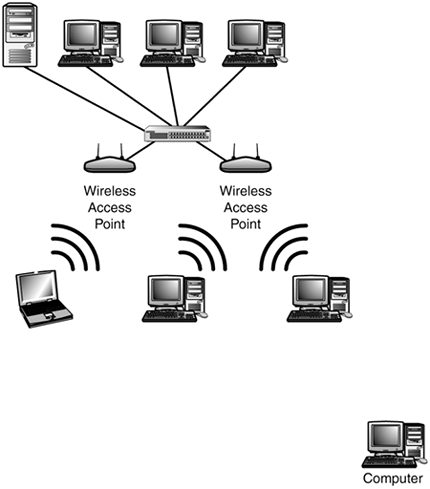
As with any of the other standards, FDDI has specific characteristics:
-
Speed FDDI transmits data at 100Mbps and higher.
-
Topology FDDI uses a dual ring topology for fault-tolerant reasons.
-
Media FDDI uses fiber-optic cable that enables data transmissions that exceed two kilometers. Additionally, it is possible to use FDDI protocols over copper wire known as the Copper Distributed Data Interface (CDDI).
-
Access method Similar to 802.5, FDDI uses a token-passing access method.
Table 1.7 summarizes each of the wired standards discussed in the previous sections.
|
Standard |
Speed |
Physical Topology |
Logical Topology |
Media |
Access Method |
|---|---|---|---|---|---|
|
802.3 |
10Mbps |
Bus and Star |
Coaxial and twisted pair |
CSMA/CD |
|
|
802.3u |
100Mbps (Fast Ethernet) |
Star |
Bus |
Twisted pair |
CSMA/CD |
|
802.3z |
1000Mbps |
Star |
Bus |
Twisted pair |
CSMA/CD |
|
802.3ae |
10-Gigabit |
Backbone connections |
N/A |
Fiber/Not Required |
|
|
802.5 |
4Mbps and 16Mbps |
Star |
Ring |
Twisted pair |
Token passing |
|
FDDI |
100Mbps |
Dual ring |
Ring |
Fiber-optic Twisted pair (CDDI). |
Token passing |